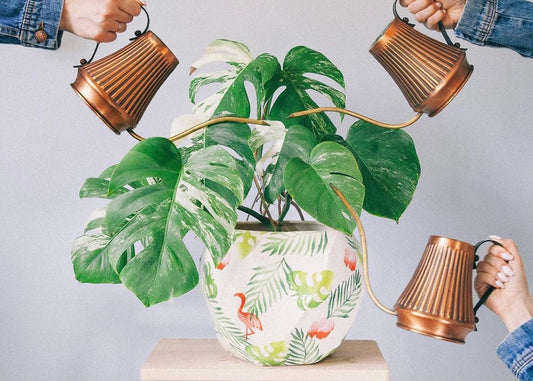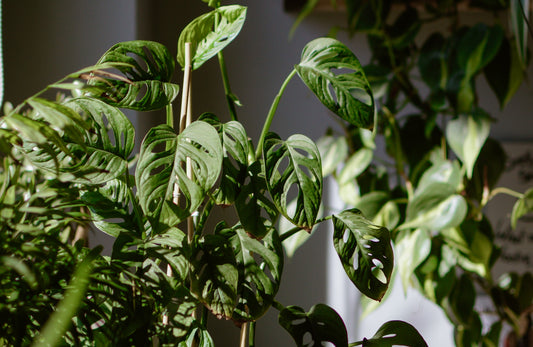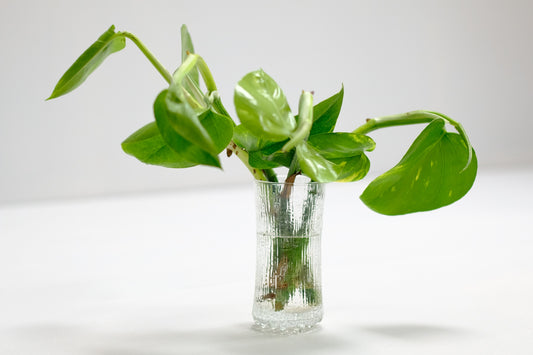Seasonal Plant Care Tips: Spring
Spring is when amazing nature stuff happens. Step up your plant care routine game this season and watch your houseplants come to life!

Water a bit more
You might have noticed your plants are drying out quicker now (and if you haven’t, that’s okay - that’s exactly why we are writing this!). Increasing light and temperature means plants will use up the water a bit faster than they have been during the winter months, so it’s good to check on them frequently. Your plants won’t suddenly drink up twice as much, so increase water frequency gradually to avoid overwatering. Summer isn’t here just yet!
Give your plants a boost
Even though some houseplants keep growing throughout winter, most of the growth happens in spring and summer. Whilst is true most of the growth is powered by the process of photosynthesis (water ✔️, sunlight ✔️), a small but significant amount of what a plant needs is made up of minerals, sometimes called plant nutrients.
These need to be supplied to plants in form of a fertiliser. When using fertilisers, always read the instructions and if in doubt, always give a smaller dose. Very much like medicines, small amounts can make you feel better, but doubling the dose would be harmful!
Consider repotting
If you’ve had a plant living in the same pot for over a year, it might need to move move to a bigger home. Spring is the perfect time to repot your plants. Remember to pick a pot with drainage holes that’s just a couple of inches bigger than the old one and use fresh potting mix (peat-free if possible). Most potting mix will already have enough nutrients needed for healthy growth, so refrain from adding fertilisers in the soil for a few weeks. Foliar fertilisers are safe to use, even on freshly potted plants.
Pruning
It is normal for some leaves, especially if lower, or older, to wilt and eventually yellow.
Make sure you remove any dropped leaves as they are excellent hosts for pests and disease!
Pruning can also be used to encourage more growth, to acquire a certain shape or simply to control the spread of a plant when space becomes an issue. Added benefit, you can propagate your cuttings and make even more plants!
Moving outdoors
If you’re thinking of moving indoor plants outside for the good season here are a few things to keep in mind.
We all know how unpredictable British weather can be, so be cautious and wait until night temperatures have been consistently over 12-15 degrees C before moving your plants to your balcony/garden.
Start by taking your plants outside only for a few hours a day. Do this for a few days, gradually increasing the time spent outside. This will allow your plants to get used to the greater amount of light and warmth and will minimise shock.
It’s best to place your plants in a shady area, unless they are sun-loving plants like succulents, and to water them early morning or late evening to avoid water evaporating right away. When the weather gets really hot, you might need to water them every day, or even twice a day!
More tips on Summer plant care coming soon. Sign up to our newsletter to grow your plant knowledge.
Photo by @warsawjungle




